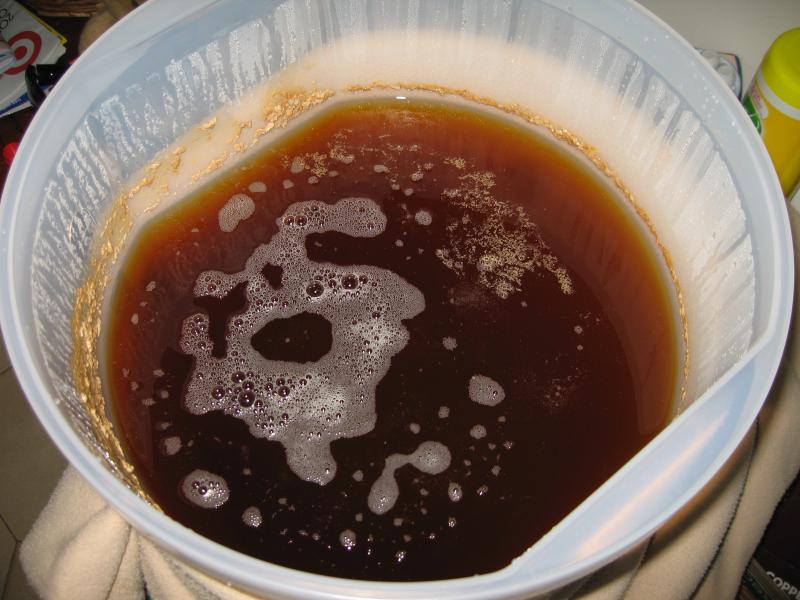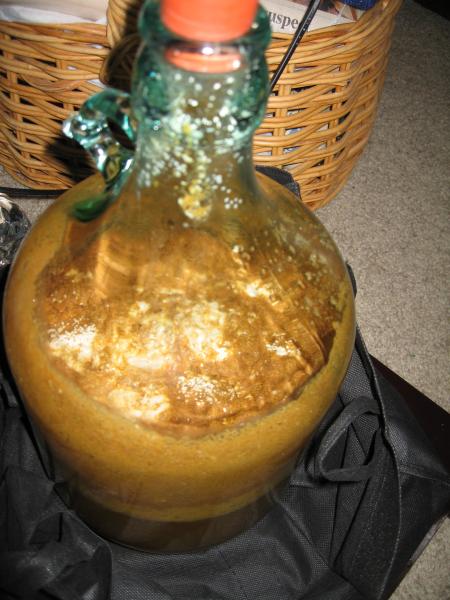Hi. This is very first time trying to home brew.
I've followed the coopers receipe:
http://www.coopers.com.au/the-brewers-guild/how-to-brew/light/zephyr-light
I was hoping to make a light beer.
I'm basically using the fermenting kit which you buy from coopers. I'm up to my 4th day in the fermenter, but my brew tastes kinda sour when I try it. It's not very alcoholic as it's a light batch, but it's kinda sour. (In comparison to the commercial stuff which has a much cleaner and crisper taste)
I've struggled to keep the temp constant at 20c. It's usually between 18-26 degrees, using a mixture of blankets (wrapping the fermenter) to keep the fermenter warm when it's cold, and a heat pad (placed underneath the fermenter). But it seems to keep around the 22-24 degree mark most of the time. Really hard to regulate.
The coopers kit doesn't come with an airlock, just a lid that you put over a big plastic fermenter. Which I've opened 1-2 times per day (for roughly 15-30 seconds each time) to see how it was going. It really smelt on days 2-3, but doesn't seem to smell much now. (sour smell say in the past)
The question is, since it's tastes a bit sour. Should I chuck it out?? And start again?? Or will this improve over time? Or should I keep going?
It says : " Bottle when specific gravity has reached 1.006 (or two readings the same over 24 hours). " on the coopers receipe. On day 3, I got a reading of 1.003 on the hydrometer & 0.997 today (day 4). How close am I to being ready to bottle? Or should I just chuck it out since it tastes a little sour.
Since the fermenter was new & straight out of the box, I didn't sanitize it using odourless household bleach before using it. It just rinsed it out with really hot water. Could this be my problem? I did sanitize the stainless steel pot I used to boil my original 2 litres of water though using household bleach.
Please let me know your thoughts. I'm new to this, and I'm loving it so far. Just dunno why my batch seems kinda sour?
Thanks!
I've followed the coopers receipe:
http://www.coopers.com.au/the-brewers-guild/how-to-brew/light/zephyr-light
I was hoping to make a light beer.
I'm basically using the fermenting kit which you buy from coopers. I'm up to my 4th day in the fermenter, but my brew tastes kinda sour when I try it. It's not very alcoholic as it's a light batch, but it's kinda sour. (In comparison to the commercial stuff which has a much cleaner and crisper taste)
I've struggled to keep the temp constant at 20c. It's usually between 18-26 degrees, using a mixture of blankets (wrapping the fermenter) to keep the fermenter warm when it's cold, and a heat pad (placed underneath the fermenter). But it seems to keep around the 22-24 degree mark most of the time. Really hard to regulate.
The coopers kit doesn't come with an airlock, just a lid that you put over a big plastic fermenter. Which I've opened 1-2 times per day (for roughly 15-30 seconds each time) to see how it was going. It really smelt on days 2-3, but doesn't seem to smell much now. (sour smell say in the past)
The question is, since it's tastes a bit sour. Should I chuck it out?? And start again?? Or will this improve over time? Or should I keep going?
It says : " Bottle when specific gravity has reached 1.006 (or two readings the same over 24 hours). " on the coopers receipe. On day 3, I got a reading of 1.003 on the hydrometer & 0.997 today (day 4). How close am I to being ready to bottle? Or should I just chuck it out since it tastes a little sour.
Since the fermenter was new & straight out of the box, I didn't sanitize it using odourless household bleach before using it. It just rinsed it out with really hot water. Could this be my problem? I did sanitize the stainless steel pot I used to boil my original 2 litres of water though using household bleach.
Please let me know your thoughts. I'm new to this, and I'm loving it so far. Just dunno why my batch seems kinda sour?
Thanks!








































![Craft A Brew - Safale S-04 Dry Yeast - Fermentis - English Ale Dry Yeast - For English and American Ales and Hard Apple Ciders - Ingredients for Home Brewing - Beer Making Supplies - [1 Pack]](https://m.media-amazon.com/images/I/41fVGNh6JfL._SL500_.jpg)


















